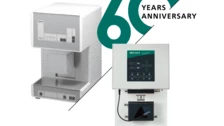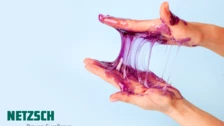
applications
Adhesives & Sealants
State-of-the-art adhesives and sealants are of central importance in the development of new and innovative products for many key industries today.
Using various thermal analysis methods, it is possible to investigate and kinetically analyze polymers and additives as well as the Curing (Crosslinking Reactions)Literally translated, the term “crosslinking“ means “cross networking”. In the chemical context, it is used for reactions in which molecules are linked together by introducing covalent bonds and forming three-dimensional networks.curing behavior of reactive adhesives.
Thermal analysis methods can be used for incoming goods inspection, following each process step and in the final inspection. The bond itself can be checked under real-world conditions.
Adhesives & Sealants in Details
The melting and CrystallizationCrystallization is the physical process of hardening during the formation and growth of crystals. During this process, heat of crystallization is released.crystallization behavior of synthetic or natural raw materials, along with a great variety of additives, can be investigated with Differential Scanning Calorimetry (DSC) For sealing materials, the Glass Transition TemperatureThe glass transition is one of the most important properties of amorphous and semi-crystalline materials, e.g., inorganic glasses, amorphous metals, polymers, pharmaceuticals and food ingredients, etc., and describes the temperature region where the mechanical properties of the materials change from hard and brittle to more soft, deformable or rubbery.glass transition temperature is analyzed in the low temperature range, since it describes the cold flexibility.
Material composition can be quantified by Thermogravimetric Analysis (TGA). The coupling of a thermo-microbalance to an infrared spectrometer (FT-IR) or a Mass Spectrometer (QMS) allows for the analysis of gases released and thus for the identification of the adhesive and sealing system.
Increasingly, LFA (Laser/Light Flash Analysis) is being used for the determination of Thermal DiffusivityThermal diffusivity (a with the unit mm2/s) is a material-specific property for characterizing unsteady heat conduction. This value describes how quickly a material reacts to a change in temperature.thermal diffusivity and conductivity on thin adhesive layers, since it is a quick, non-contact measuring method. With Thermomechanical Analysis (TMA) or Dynamic-Mechanical Analysis (DMA) the bond can be checked under conditions relevant in practice (as a function of the force, deformation path and frequency).
Both the thermal and the UV-Curing (Crosslinking Reactions)Literally translated, the term “crosslinking“ means “cross networking”. In the chemical context, it is used for reactions in which molecules are linked together by introducing covalent bonds and forming three-dimensional networks.curing of 1K or 2K adhesives can be characterized reliably with DSC and Dielectric Analysis (DEA). Kinetic analysis of the measurement data allows the activation energy for the Curing (Crosslinking Reactions)Literally translated, the term “crosslinking“ means “cross networking”. In the chemical context, it is used for reactions in which molecules are linked together by introducing covalent bonds and forming three-dimensional networks.curing reaction to be determined. In addition, computer simulations by Kinetics Neo can help generate a suitable reaction model for your optimum process conditions and determine the optimum degree of Curing (Crosslinking Reactions)Literally translated, the term “crosslinking“ means “cross networking”. In the chemical context, it is used for reactions in which molecules are linked together by introducing covalent bonds and forming three-dimensional networks.curing.
Application Literature






